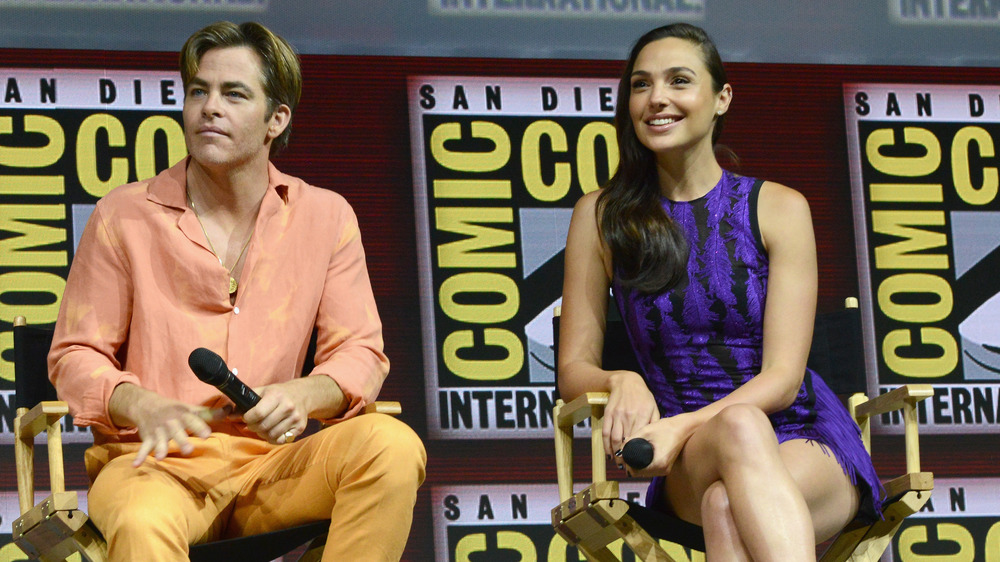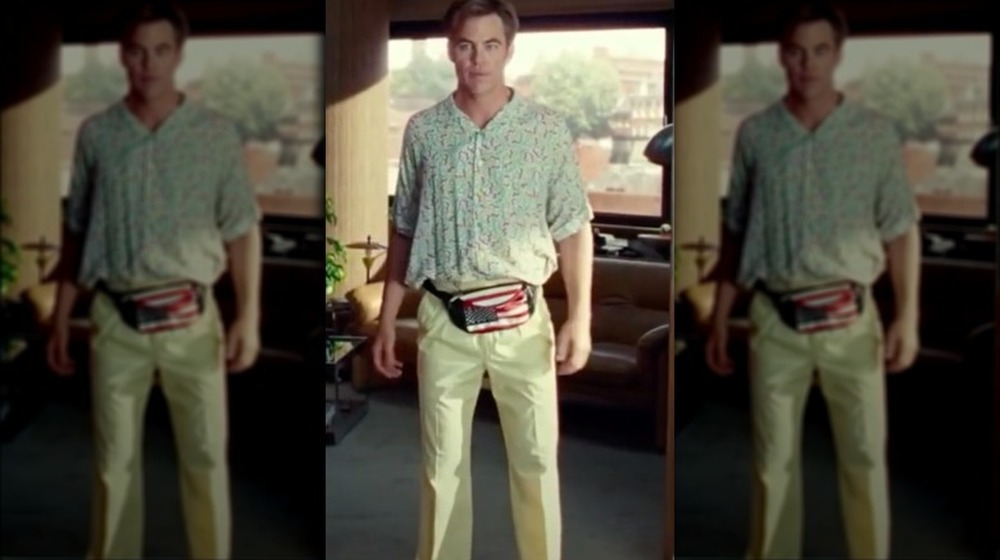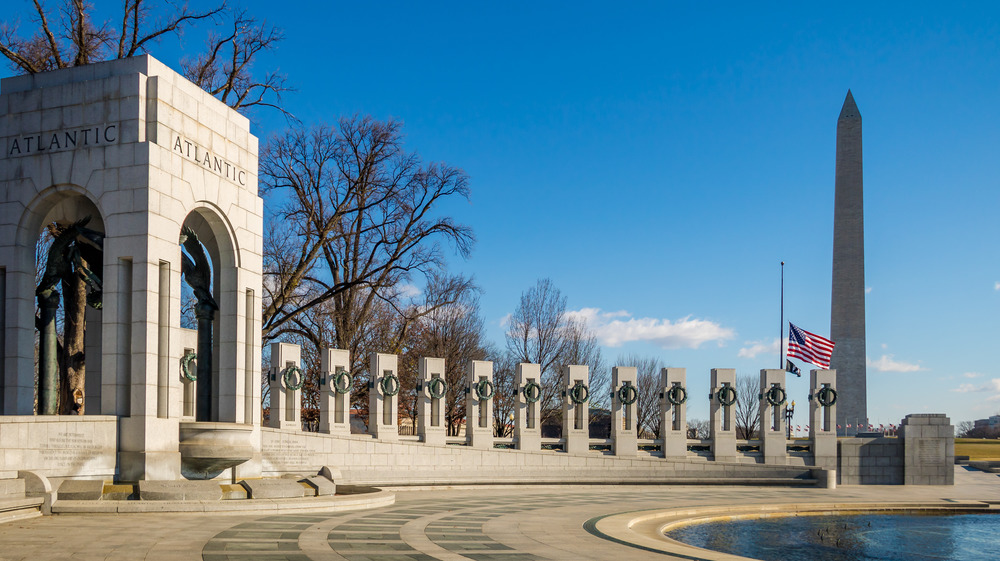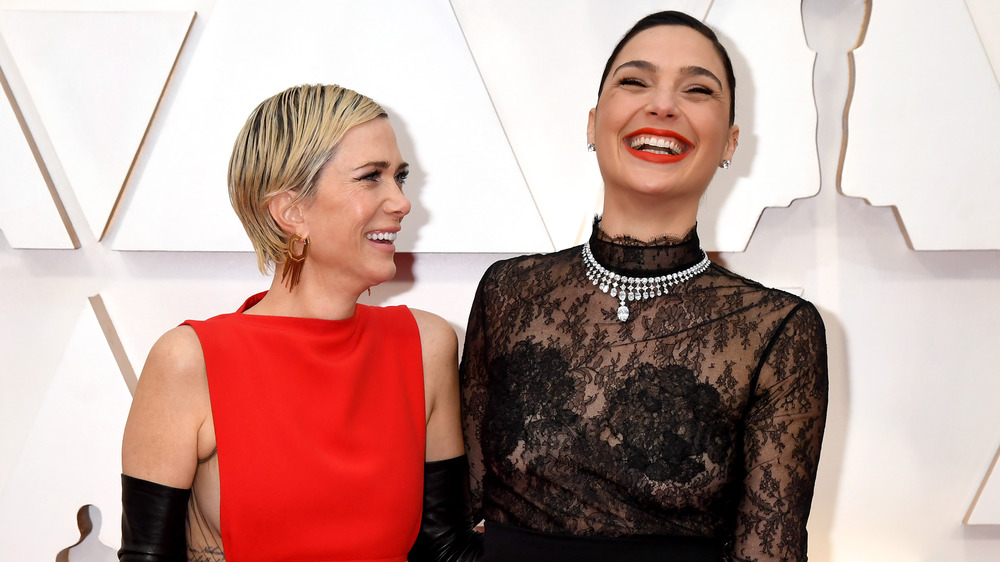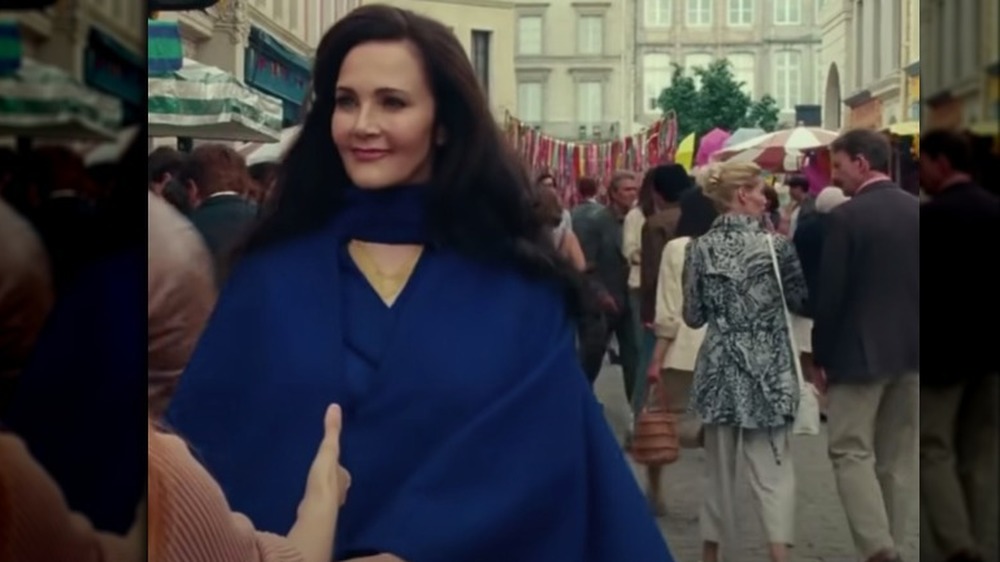Moments Only Adults Seem To Catch In Wonder Woman 1984
The fantasy movie world got a major shot of girl power when Wonder Woman burst onto screens in 2017. The film raked in millions at the box office, made an instant star of Israeli actress Gal Gadot, and helped smash the stereotype that only guys can carry off a superhero starring role. Naturally, Warner Bros. wasted no time in planning a sequel, and so Wonder Woman 1984 hit both theaters and HBO Max this past December. The film was hailed by both audiences and critics as a much-needed treat during the dumpster fire that was 2020; Variety declared that it "whisks us away from our worries, erasing them with pure escapism."
Younger viewers no doubt got a kick out of glimpsing a time in which phones had cords, people did the robot instead of flossing, and TikTok was just a sound made by clocks. The movie allowed older generations to relive that unforgettable time — and spot some things that millennials probably overlooked. Maybe you did, too.
The film has totally tubular details
A major plot point of Wonder Woman 1984 is an artifact called the Dreamstone that has the power to grant the user's dearest wishes. Diana uses it to resurrect the soul of her love Steve, who was introduced in the original movie. Since Steve died in 1918, it falls on Diana to get him up to speed on the times. That neatly allows the audience to see the Reagan era through a newcomer's eyes, and for many, to experience those "OMG, I remember that!" moments.
The early '80s brought us such innovations as the Sony Walkman, futon beds, and the first Apple Macintosh. Cable TV was in its infancy, and MTV was the must-see channel. Punk rock, new wave, and hip-hop were the sounds of the day, and the popular moves were represented in films like Flashdance, Footloose, and Breakin'. Preppies and Valley Girls were the '80s version of VSCO Girls. And oh, that fashion! In one scene, we see Steve try on a number of period outfits in an effort to blend in: a track suit, parachute pants, a Miami Vice-style suit, a polyester getup with a fanny pack. By the time Diana puts him in an oversized scarf, he's reached his limit: "Who would wear this?!"
The film has some anachronistic slip-ups
The problem with period films is that it's hard to get absolutely every detail right. Sometimes, as in the case of Bridgerton's colorful costumes, it's a deliberate production choice; other times, the anachronisms seem to be simple goofs. There are definitely more than a few of the latter in Wonder Woman 1984.
The nitpickers at IMDb point out a number of little gaffes. For instance, Steve and Diana are shown walking along the Reflecting Pool by the Washington Monument. The World War II Memorial is visible, a landmark that wouldn't be built until 20 years after the film takes place. Another scene shows one of Diana's coworkers getting his Dreamstone wish for coffee; trouble is, the takeout cups have the raised sipping-type lids that weren't yet popular. Post-1984 video games are visible in a mall arcade, and a man is seen walking a Goldendoodle dog, a breed that didn't exist back then.
The biggest oops of all, notes Looper, is when villain Maxwell Lord broadcasts his "everybody wish!" message on TVs and computer screens worldwide. He might be able to do that today, but back in 1984, personal computers were just in their infancy. Only a lucky few had a Macintosh in their homes, and the internet as we know it didn't come into widespread use until more than a decade later.
One accurate detail, though, is winning raves from those in the know. The film recreated the facade of Commander Salamander, an iconic punk-merch store still fondly remembered by DC residents (per WTOP).
The film repeats a tired stereotype
Sadly, Looper also notes that the Wonder Woman franchise's girl-power message is watered down by the sequel's use of a wheezy theme. Kristen Wiig departs from her comic roots to play Barbara Minerva, a mousy coworker of Diana's who longs for Diana's confidence and strength. The Dreamstone grants her wish and turns her into the super-powered Cheetah, who evolves into an "apex predator" who has to be defeated by Wonder Woman.
We've all seen this transformation before: Frumpy, introverted girl gets a makeover — sometimes it's as simple as taking off her glasses and letting her hair loose from a tight bun — and suddenly she's gorgeous, self-assured, and popular. Think Bette Davis in Now, Voyager, or Nia Vardalos in My Big Fat Greek Wedding. Heck, Anne Hathaway did it twice, in The Princess Diaries and The Devil Wears Prada. Why can't Hollywood give us a heroine or villainess who's cool without being glamorous?
The original Wonder Woman makes a cameo
The true "wow" moment for older viewers comes toward the very end of the film. We see a busy thoroughfare decorated for a street fair, where a dark-haired woman in a long blue tunic is briskly walking away from the camera. At one of the stalls, men on a ladder are putting up a tall, heavy pole when suddenly it slips and heads down toward a mother with a baby carriage. Without missing a beat, the woman puts up her arm and catches the pole just in time. The grateful mother thanks her rescuer and asks her name. The mysterious woman turns around, smiles, and says, "Asteria...It's a name from my culture."
Double shock! Not only is Asteria the legendary Amazon warrior whose armor Wonder Woman uses in her battle against Maxwell Lord and Cheetah, she also happens to be played by Lynda Carter, star of the Wonder Woman TV series that ran from 1975 to 1979. Talk about past and present worlds colliding.
